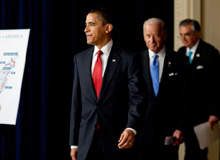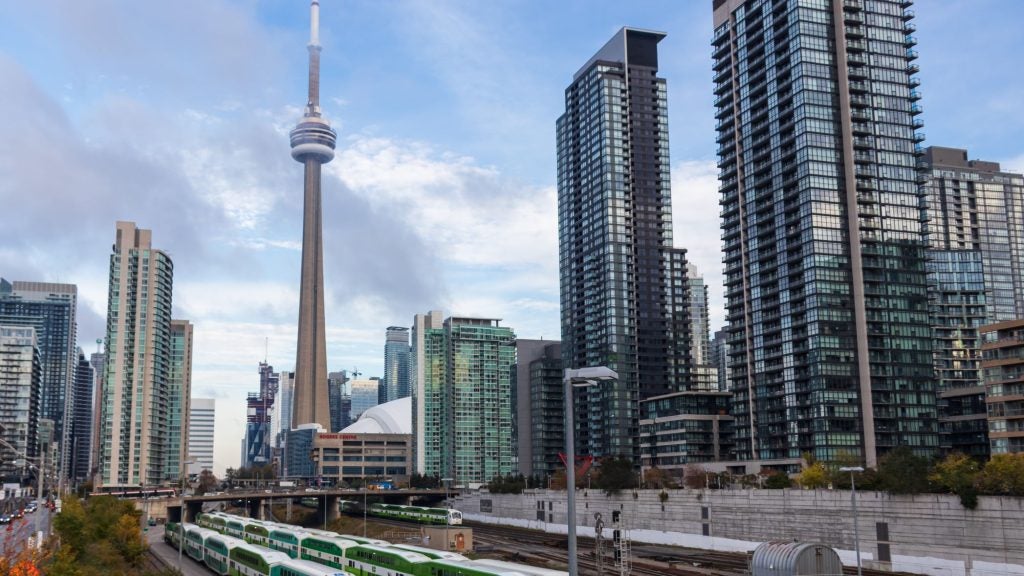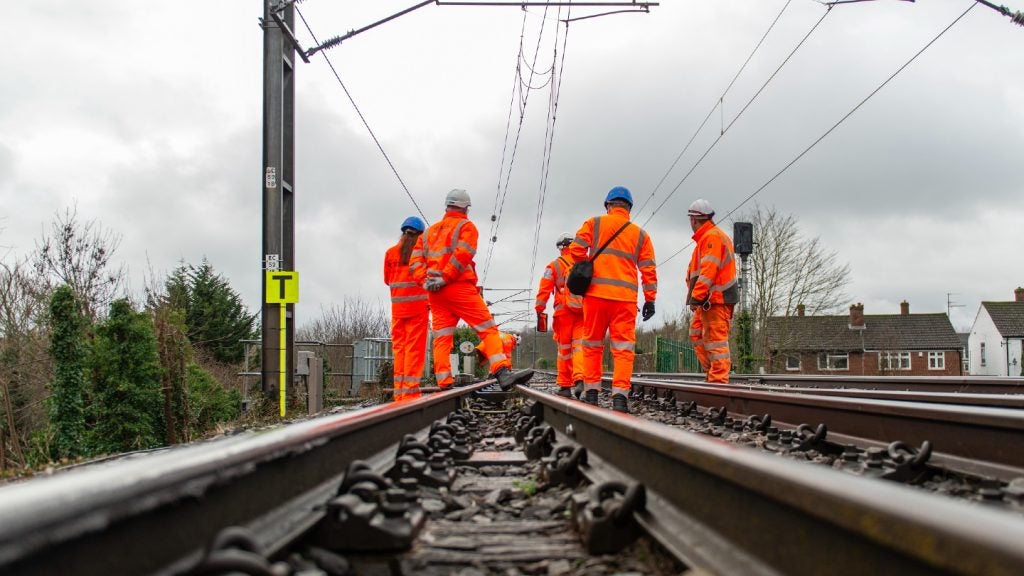
In mid April 2009, President Barack Obama revealed a new vision for rail infrastructure across America. As part of the American Recovery and Reinvestment Act (ARRA), the $13bn strategy appears to be a significant push towards reducing US dependency on cars and planes through focusing on high-speed passenger trains.
As a nation famed for creating the modern automobile industry, the US has historically shunned large-scale rail infrastructure in preference to an extensive highway network. Such a policy was famously championed by President Dwight Eisenhower, who duly implemented the largest highway system in the world across the US, spanning a total length of 46,876 miles.
Just over 100 days into his presidency, comparisons are already being drawn between Obama and Eisenhower thanks to the ambitious nature of the current president's plans to construct a network of high-speed rail corridors across America. Yet, while the scale and connectivity of both projects are relatively similar, Obama's rail vision draws stronger comparisons to the transport infrastructure seen in Europe and Asia. If anything it conflicts heavily with the policy initiated by Eisenhower that has led to five decades of America focusing on road infrastructure.
Obama has been quoted as saying high-speed rail is 'long overdue' in America and he wasted no time in allocating $8bn of February's economic rescue plan for investing in rail travel in the next two years. A further $5bn has also been positioned in his budget for investing in rail travel in the next five years.
Fast track to success
See Also:
At the centre of Obama's transport strategy is a network of 100-mile to 600-mile high-speed rail corridors that will connect various US communities. The projects will be developed through a partnership between the public sector and private industry, which the Obama administration hopes will also stimulate the economy through the creation of a range of new jobs.
How well do you really know your competitors?
Access the most comprehensive Company Profiles on the market, powered by GlobalData. Save hours of research. Gain competitive edge.

Thank you!
Your download email will arrive shortly
Not ready to buy yet? Download a free sample
We are confident about the unique quality of our Company Profiles. However, we want you to make the most beneficial decision for your business, so we offer a free sample that you can download by submitting the below form
By GlobalDataBy the late summer of 2009, the Federal Rail Administration is expected to begin awarding the first round of grants following the publishing of detailed guidance for state and local applicants. To date, ten major corridors have been identified as potential recipients for federal funding: California, Pacific Northwest, South Central, Gulf Coast, Chicago Hub Network, Florida, Southeast, Keystone, Empire and Northern New England.
A single high-speed rail line currently exists in America, in operation between Washington, New York and Boston. Part of the Northeast Corridor (NEC), Amtrak’s Acela Express service operates at speeds of up to 150mph. Although, on certain sections of the track speeds are heavily reduced – in particular around the suburban region of New York where there is a limit of 90mph. This line is also being considered for funding.
The Obama administration has therefore identified two types of projects for funding – one aimed at creating new corridors entirely from scratch and another that involves upgrading train services along existing rail lines to make them incrementally faster. It is expected that along all corridors – whether upgraded or new tracks – trains will be capable of reaching speeds of 100mph.
This is typically slower then most European standards and while the level of investment in rail is vastly higher then anything seen before in the US, it still amounts to a fraction of what is spent in Europe when the level of individual state investment is considered. Aware of this, regional transport offices are already scrambling to come up with proposals to win favour in Washington – most notably in Oregon and Pennsylvania. To emphasise how thinly the overall $13bn budget for rail spreads, construction of the line in California could cost as much as $45bn.
Getting Amtrak back on track
With the Obama administration seemingly squaring up to America's awkward history with rail, the mammoth level of investment required to create infrastructure to match its western counterparts is now being fully realised. This is also particularly evident with the government-owned National Railroad Passenger Corporation known as Amtrak.
Established in 1971, Amtrak's past is steeped in political cross-fires and insufficient capital resources. While the company currently employs nearly 19,000 people and operates passenger services on 21,000 miles of tracks, it has to largely share its network with freight companies and rely heavily on rolling stock from the 1970s.
Despite having a presence in nearly all 48 states, Amtrak could only account for 0.1% of US intercity passenger miles in 2003.
Its most popular and heavily used service is the Northeast Corridor (NEC) – aforementioned frontrunner for public funding – which contributed for ten million of Amtrak's 25.7-million passengers in 2007.
Several significant Amtrak lines have even been eliminated since the company's inception – most notably the 'National Limited' linking Kansas City and Missouri with New York and Washington.
When Hurricane Katrina damaged a network along the Gulf coast in 2005, Amtrak continued with a shortened service excluding Jacksonville, Florida and New Orleans even though the track's owner CSX completed repairs in 2006. All these factors have contributed towards a network full of significant gaps in services.
Recognising this, Vice President Joe Biden said in March 2009: "for too long, we haven't made the investments we needed to make Amtrak as safe, as reliable, as secure as it can be." During the speech at Washington DC's Union Station he went on to add that Amtrak is to receive a $1.3bn in grant funding from the ARRA to expand rail capacity.
The move doubles Amtrak's capital investment programme for the next two years and will be used to upgrade railroad assets and infrastructure. This includes the replacement of a major drawbridge on the NEC ($105m), repairs to Amtrak facilities nationwide ($105m), the repair and return of nearly 70 stored and damaged passenger cars ($82m) and the rehabilitation of major elements of the NEC electrification system ($63m).
When examined more closely, the project neatly combines many of Obama's transportation goals. Repairs to passenger cars, for example, will be performed at Amtrak facilities in Indiana and Delaware, which will create jobs for skilled workers laid-off from jobs at nearby manufacturing plants. Likewise, plans to entirely rebuild three rotary frequency converters which form a key element of the NEC will ensure for future reliability on a service that has suffered crippling power outages in recent years. The $60m funding towards positive train control (PTC) – an advanced signalling technology – is yet another significant move towards a more modernised and safer rail system; one that even surpasses capabilities in parts of Europe.
high-speed rail line currently exists in the US,
it operates between Washington, New York and Boston.”
Tunnel of hope
If Obama's vision of transforming America's public transport domain is realised, then the social and environmental implications could be vast. For a nation that has set a global benchmark in promoting and supporting a car-dependent population, the possibility of a serious alternative form of transport nationwide might even at first seem alien.
Indeed, critics have already voiced concern that America has no real pent-up demand for rail transportation and so the forthcoming infrastructure could effectively be redundant.
However, the US faces steep pressure to decrease its dependency on oil and strive towards a more sustainable eco-friendly future.
Rail infrastructure certainly ticks some of the boxes. An estimate from the Obama administration believes that if all ten high-speed rail corridors are completed, it could result in an annual reduction of six billion pounds of CO2. What lies between now and then, however, is a mountain of challenges caused by a nation historically weak on rail
infrastructure.





